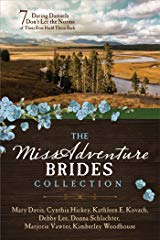First of all, what is the Death in the Middle (DM) and why is it so important? The DM holds up the middle of the story. It's something that happens to keep the story moving forward. But it's so much more than that.
- It happens smack in the middle of the second act. In my research, most movies have a DM at the exact middle. (I.e., 90 mins divided by 2 = 45.) Some happen a few minutes before or after, but often it's right at that mid-point.
- The DM should also signal a paradigm shift. It doesn't always, but it's so cool when it does.
- In The Beauty and the Beast, the beast sacrifices himself while protecting Belle from the wolves. Her opinion of him shifts as she sees he's not the monster she had thought he was. (Death of a belief.)
- In Hidden Figures, Katherine has a much needed outburst as she explains why she takes long breaks. The Colored Only bathroom is across the complex. This prompts her boss to tear down the sign and declare that everyone pees the same color at NASA. (Death of segregation, at least at NASA.)
- It should speak to the theme.
- The basic theme in The Beauty and the Beast is Things Aren't What They Seem.
- The basic theme of Hidden Figures is Racism.
- It signals a death of some kind. The death of segregation; the death of a perceived notion; a literal promise of death as in Avengers: Infinity War. Read on...
Thanos. The thick jawed villain with a serious stone-collecting obsession.
Yes, hard to admit, but this is his story. Or should I say, a continuation of his story? This movie is #4 out of five showing the Titan war lord's character. He's featured in the infamous credit scenes in The Avengers and Avengers: Age of Ultron. He is also a principle character in Guardians of the Galaxy and Avengers: Infinity War.
What does Thanos have to lose? The ability to restore order (albeit his order) through the full collection of infinity stones. How does he do this? By using their full power to annihilate half the universe's population.
The scene in the middle of the movie is that of Thor, Rocket, and Groot on the planet Nidavellir where Thor's original hammer (now disintegrated thanks to his sister with ridiculous anger issues) was formed by the giant dwarf Eitri. At first, I thought the death had to do with the complications of forming another hammer. These complications are: Devastation of the planet by Thanos; machinery destroyed; no way to reactivate the forge except through extreme sacrifice on Thor's part...all deaths in one way or another. But they didn't meet all the criteria. This movie isn't just about Thor. There's a whole ensemble here laying their lives on the line. So I looked closer, and at the exact middle, the camera pans to a mold of Thanos's gauntlet.
Let that sink in. The middle of Act II pans to the mold in which the metal glove--that will ultimately destroy the universe--was forged by Eitri. If we're following Thanos's arc, we are learning at this point how he attained this weapon of mass destruction. Even though this scene is not an immediate threat of death, as we're learning of the backstory, it still helps us see what lengths Thanos will go to achieve his end. The Death in the Middle is seeing the mold of the gauntlet that will cause the worse destruction ever in the Marvel Cinematic Universe. It's what these movies have been leading up to.
But, if this is movie #4 out of five, how is this a death in the middle? Shouldn't the middle movie #3, Avengers: Age of Ultron, show Thanos's paradigm shift? It does, in a mid-credits scene. Thanos has the gauntlet and is very dissatisfied with his minions who have failed to retrieve the stones. In his shift of thought, he decides to go after them himself.
You can't make this stuff up. Okay, someone made this stuff up, but they did it brilliantly!
So, does the DM in Avengers: Infinity Wars meet the criteria?
- If Thanos is our main character, we see here the beginning of his evil plan in the gauntlet mold and Eitri's telling of it's origin. Thus, the DM is the promise of the death of the universe as we know it.
- Does it reflect the theme? As I see it, the theme is Order Out of Chaos. This is what Thanos believes. His inner desire is to bring order to the universe. And the gauntlet is the means to that end.
➤Bonus lesson: The villain/antagonist should always have a good reason, at least to him, why he does what he does. Old school Disney villains are out, now they must have "the feels" for something. For further reading on this subject, please check out my list of articles on villains.
This one was complex. It doesn't help to know that we haven't gotten all of Thanos's backstory. This is why I struggled with finding the DM. But, I think I've got it now, and I hope I've broken it down sufficiently. It will be interesting to fill in all of the blanks on Thanos and see what really makes him tick.
Here's a breakdown of Thanos's character arc thus far:
- Outer Goal/Inner Need (Using GMC – Goal, Motivation, and Conflict)
- Character wants Infinity Stones, because they will restore balance, but the Avengers get in the way.
- Character needs balance, because of something that happened on his home planet (?).
- Inciting Incident
- Not sure yet, thanks to the missing 30 minutes in the film. ERK!
- Whatever it is, pushed him through a door of no return to wreak havoc on the universe.
- Tent Pole
- He decides to have a gauntlet made to bring the Infinity Stones to their full power.
- This signals the death of half the universe.
- Not knowing his backstory, we might conclude that his paradigm shift is that upon realizing this weapon is at his disposal through Eitri, the giant dwarf, he now knows his desire can be fulfilled. (Again, the DM is the promise of the death of the universe as we know it.
- Bleakest Moment
- He learns he must sacrifice something he loves the most in order for the stones to work.
- After briefly struggling with this, knowing all will be lost if he's not strong enough to go through with it, he pushes Gamora, the step-daughter he loves, to her death.
- Lesson/Decision
- He decides to snap his fingers, which will activate the stones and wipe out half of the universe's population.
- He's apparently at peace with this decision as the final scene shows him looking out over a serene countryside with a hint of a smile on his stony face.
Here are the movies that tell Thanos's story:
- The Avengers
- Guardians of the Galaxy
- Avengers: Age of Ultron
- Avengers: Infinity War
- Avengers 4 (Untitled, coming out 2019.)
























